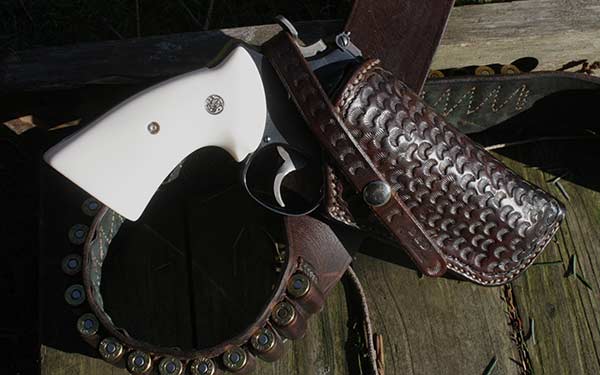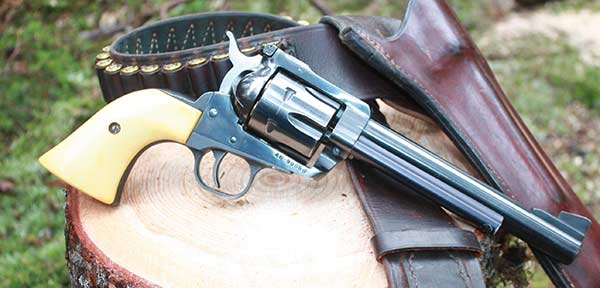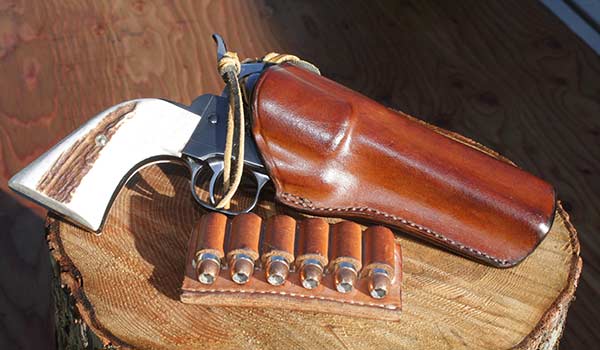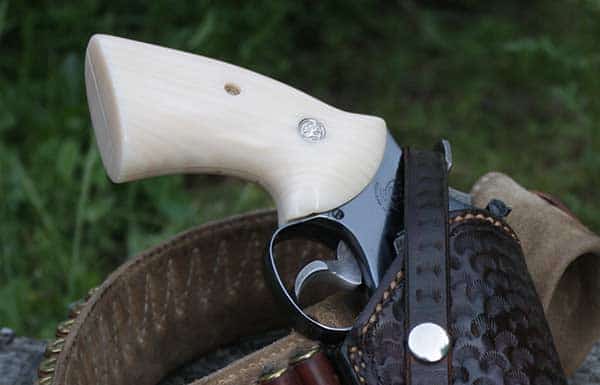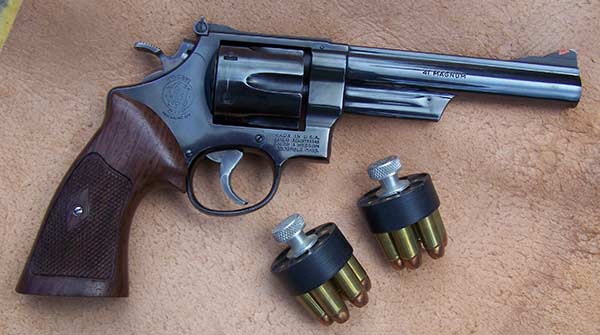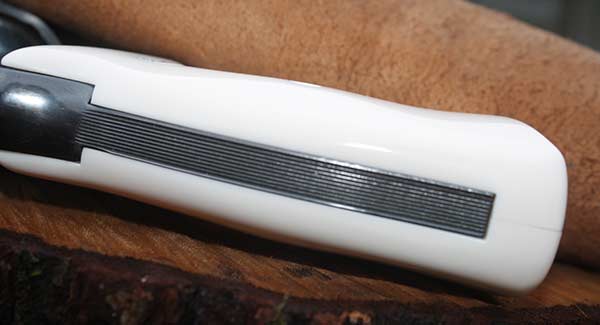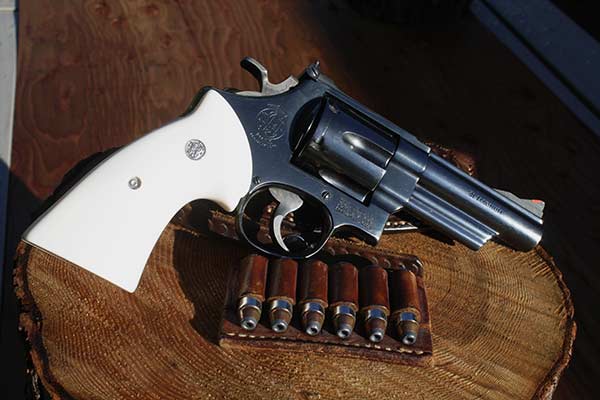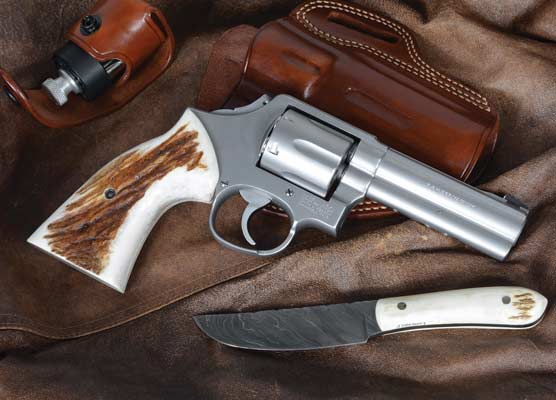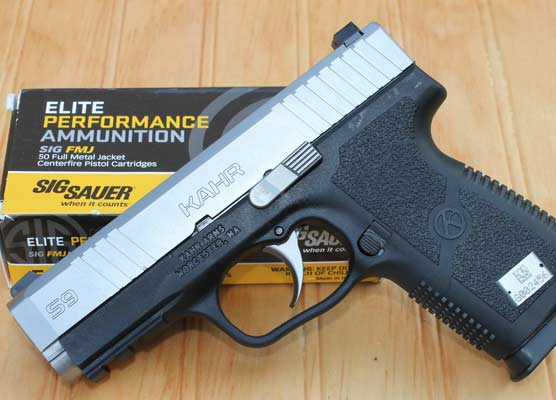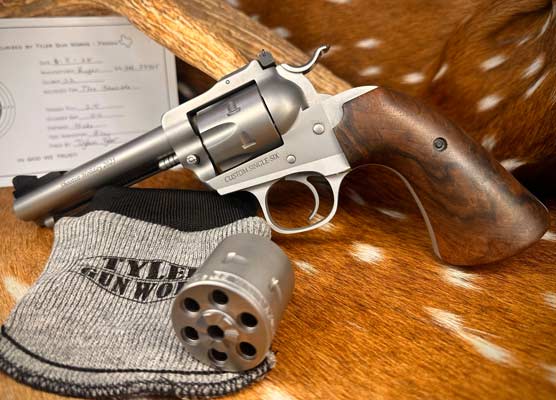A Gripping Experience: Part 1
Dave Finally Gets A Handle On Things
It is the grip that makes the handgun what it is, a “h-a-n-d gun,” and it must be functional, practical and comfortable. More about that in a minute.
First it was fake stag and fake ivory, courtesy the old Jay Scott company, whose trademark was always a hardwood base with whatever grip material was used for the outer layer. I shied away from fake pearl because, well, even in those days, we all knew what George Patton said about guys who have guns with pearly grips.
Handsome grips have always fascinated me. I can’t readily buy real ivory anymore where I live, and one time, when I inquired about a set of giraffe bone panels for one of my sixguns, the price tag darned near gave me a cardiac. Well, I saved a bunch of cash by not making that particular purchase!
But aside from being handsome, the grip must be made from tough material able to withstand occasionally nasty conditions one encounters in the world outside the front door.
Elmer Keith preferred “magna” style ivory grips with a carved steer head, which filled the palm of his hand. I had a set of grips once on a Ruger Blackhawk with a steer’s head on the right panel, and they looked snazzy, though they were just too big for my hands. I sold them at a gun show.
I’ve put “Magna Tusk” grips from Arizona Custom on a couple of my single-actions, and whatever that stuff is made from, it’s tough as nails and impervious to changing conditions. A few months back, I wrote in this space about sprucing up a handgun as an alternative to buying the next great cover story sidearm one finds in every monthly gun periodical. One of the steps involved adding new grips.
All of this leads up to a recent experience with my longtime pal, Raj Singh, at Eagle Grips. I’ve written about his products before, and after months of delay, a box containing four sets of grips arrived while I was convalescing following surgery, and I spent quite a few hours just getting acquainted with each set. There were two pairs of Eagle’s “Gunfighter” grips, with their astounding non-slip checkering — don’t ask, it’s a proprietary process which seems to flatten the traditional “pyramid” points of normal checkering — and hordes of Cowboy Action shooters have embraced.
Raj recounted a visit to a cowboy match somewhere down south at which he literally sold every set of grips on his display table, plus the backup inventory.
Also in the package was a set of elk antler grips I plan to slap on a Ruger New Vaquero for “barbecue wear.” (If you know, you know. If you don’t, I ain’t gonna explain it here.) I will say without fear of contradiction, this particular set of grips was so precisely cut and finished they fit exactly to the 90-degree angle corner of the top of the grip frame. Beauty and precision are qualities one must see close up to fully appreciate.
‘Piece de Resistance’
All of that said (there will be more next time), it was the set of Kirinite grips for a square-butt N-Frame Smith & Wesson, which really got my juices flowing because they are probably what I’ve been looking for all along.
This specific revolver came into my possession about 10 years ago. I had an old set of “bonded ivory” grips which quickly replaced the ill-fitting factory wood, and subsequently I tried another set of imitation ivory and then a pair of American holly grips cut on the Roper pattern. They’ve all seen action here and there, but there was always something missing.
A few years ago, Raj tipped me off to Kirinite, and the assorted grips were pretty interesting. In various colors for all kinds of handguns — sixguns and semi-autos — he told me the source of this material had come up with a color scheme to imitate ivory. I suggested to Raj that if he started making those grips on the Heritage pattern for double-action revolvers from this material, he’d sell a truckload of them. I’ve seen them on other people’s handguns, so I rest my case. The Heritage pattern in wood is beautiful. I have a set on a S&W Model 57, and they are superb.
Raj sent me a set and I’ve used them exclusively for about four years, in some occasionally nasty places, just to see whether this Kirinite stuff is as tough as stated. It’s actually tougher. The only “fault” I could find is that they have a slightly translucent quality, at least on the edges. I didn’t really care for that and tinkered with them a bit to make it disappear.
Some months ago, I learned Eagle had “solidified” the Kirinite color to eliminate the translucency, and naturally, I wanted to check it out. What came out of the package was a set of “Presentation White” target-style grip panels, which resemble highly-polished ivory in the white, before the years create a patina. Not only did they fit the frame of my Model 57-1 perfectly, but more importantly, they fit my hand.
The left grip panel is suitably dished at the top to make room for use of a speed loader. Silver S&W medallions are inset on both sides.
Cut on the Heritage pattern, featuring a slight palm swell on both sides, they are eye-poppingly beautiful. Considering that my post-op condition was less than 100%, this was the kind of “medicine” to help my healing considerably. I spent most of a Sunday from mid-morning to mid-afternoon with an unusual amount of February sunshine taking photographs; no small accomplishment since I wasn’t moving around too well at the time.
Makes a Statement
A set of aftermarket grips on a personal handgun makes a statement. You’re someone who tailors a sidearm to suit your tastes and needs. You also want to stand out from the crowd.
I mentioned Keith, who preferred ivory grips on his .44 and .41 Magnums, and they looked sharp in every photograph I’ve ever seen. They fit his hands, of course, and I am told by people who knew him that he had slightly smaller hands, which justifies the Magna-style grips.
Patton also preferred ivory, with his initials inset in the right panels on both his .45 Colt SAA and his S&W Registered .357 Magnum. What each man was saying is simply, “This is my handgun. It may resemble other sidearms, but this one is my personal property. I carry it with confidence. You can look but don’t touch unless invited to do so.”
There is something else about the grip, and it is the most important aspect, in my opinion. This may seem silly, but it must “marry” itself to your gun hand. A handgun grip must fit the hand and vice versa. When you wrap your paw around the grip, if it fits properly, there should be less felt recoil. It will feel natural. This fit should make shooting comfortable, which reinforces the desire to shoot more, which results in improved accuracy, which is very satisfying.
Perhaps most important of all, should the emergency ever arise during which you must quickly draw your sidearm in self-defense, against man or beast, the marriage of hand to gun just might be the edge you need to survive.

